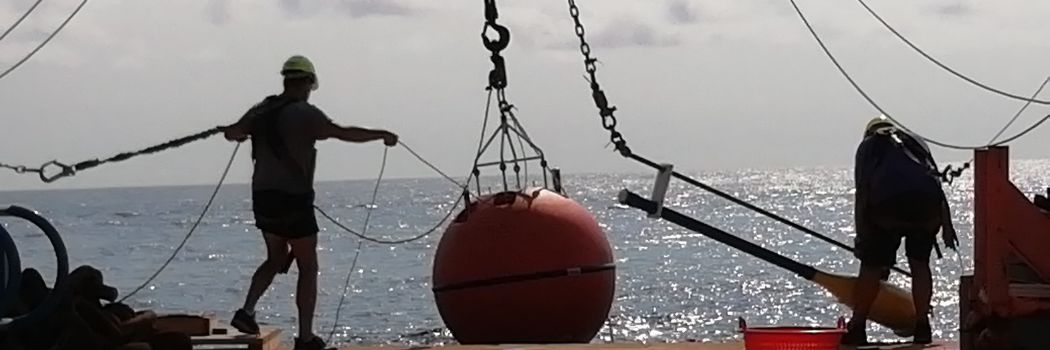Scientists discover world’s longest underwater avalanche after rescue of lost data

We’ve discovered the world’s longest underwater avalanche – after recovering lost data swept away by the dramatic event.
Sensors that were being used to monitor one of the world’s biggest underwater valleys, the Congo Canyon, were scattered across the Atlantic Ocean by the effects of the avalanche.
A swift recovery effort combed thousands of kilometres of the oceans to locate the lost sensors.
Seabed sediment avalanche
When scientists, led by Professor Peter Talling in our Department of Earth Sciences, looked at the data they contained they found evidence of a seabed sediment avalanche that had travelled for 1,100km and to ocean depths of up to 4,500km.
The avalanche had surged through the Congo Canyon, a deep underwater valley that leads away from the mouth of the Congo River, off Africa’s west coast.
Severe flooding along the Congo River, followed by unusually large spring tides, triggered the avalanche of sand and mud, whose volume was equivalent in volume to one third of the sediment produced annually from all rivers worldwide.
Unique data
Eleven sensors used to monitor the canyon broke free from their moorings in January 2020, after being dislodged by the avalanche of sediment travelling at up to eight metres a second.
The sensors were inside orange buoys, scarcely larger than a football, which drifted across the surface of the Atlantic Ocean, carrying their unique data with them.
Professor Talling said: “The odds of retrieving the sensors were tiny, as they drifted in different directions, dragged by currents across hundreds of kilometres of ocean. Rescuing those buoys seemed entirely improbable.
“But, thanks to swift and flexible action by NERC, the National Marine Facilities at the National Oceanography Centre, French colleagues at IFREMER and colleagues in Hull and Durham Universities, together with several passing vessels, we achieved one of the most remarkable bits of field science in the ocean I’m ever likely to see.”
Connecting river floods to the deep sea
Prior to this study, directly measuring powerful deep-sea avalanches was considered impractical.
But the rescued data provided direct monitoring of sediment avalanches in the Congo Canyon, enabling scientists to assess for the first time how major river floods connect to the deep-sea.
The avalanche also cut two seabed telecommunications cables, cutting internet data speeds across west, central and south Africa.
The study showed that the pattern of seabed erosion was surprisingly localised and patchy, especially given how big the flow was, which might explain why it broke some submarine telecommunication cables, but not others.
This information could help cable companies in future to position cables so that they have the best chance of surviving these events.
Find out more
-
The research is published in the journal Nature Communications. It was funded by the UK’s Natural Environment Research Council (NERC).
-
Learn more about Peter Talling, Professor in Submarine Geohazards, in our Department of Earth Sciences.
-
Interested in studying Earth Sciences at Durham? See our undergraduate and postgraduate opportunities.


/prod01/prodbucket01/media/durham-university/departments-/earth-sciences/60228-1-1998X749.jpg)